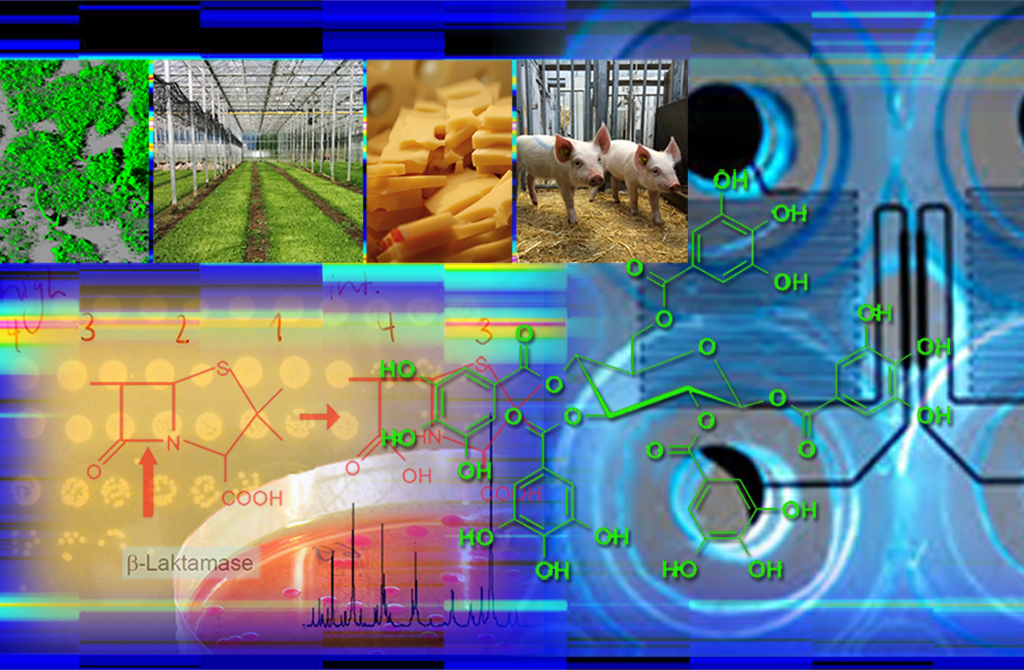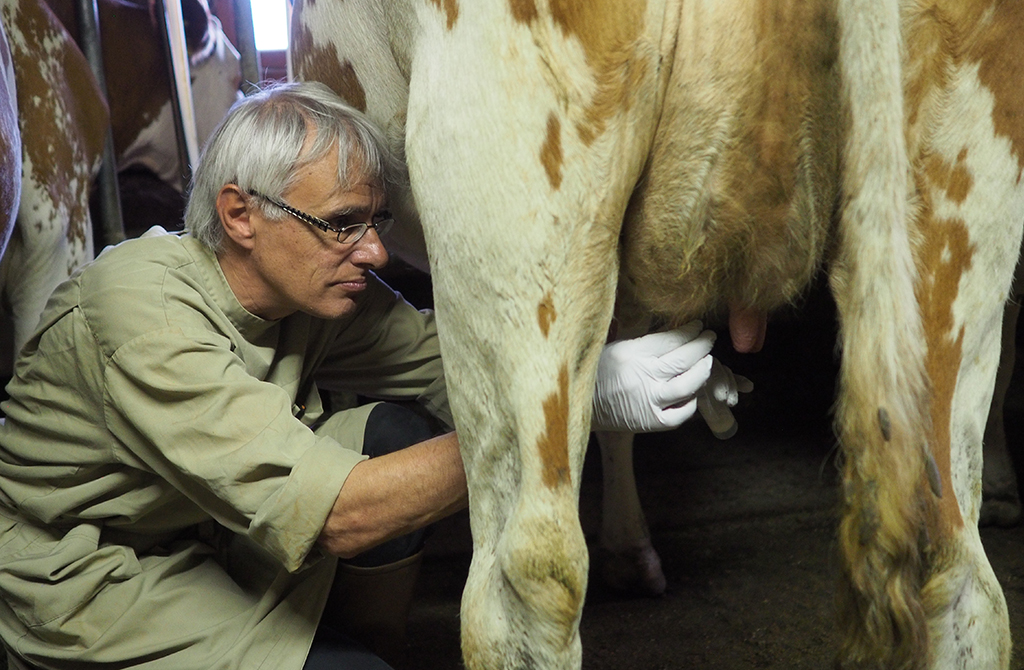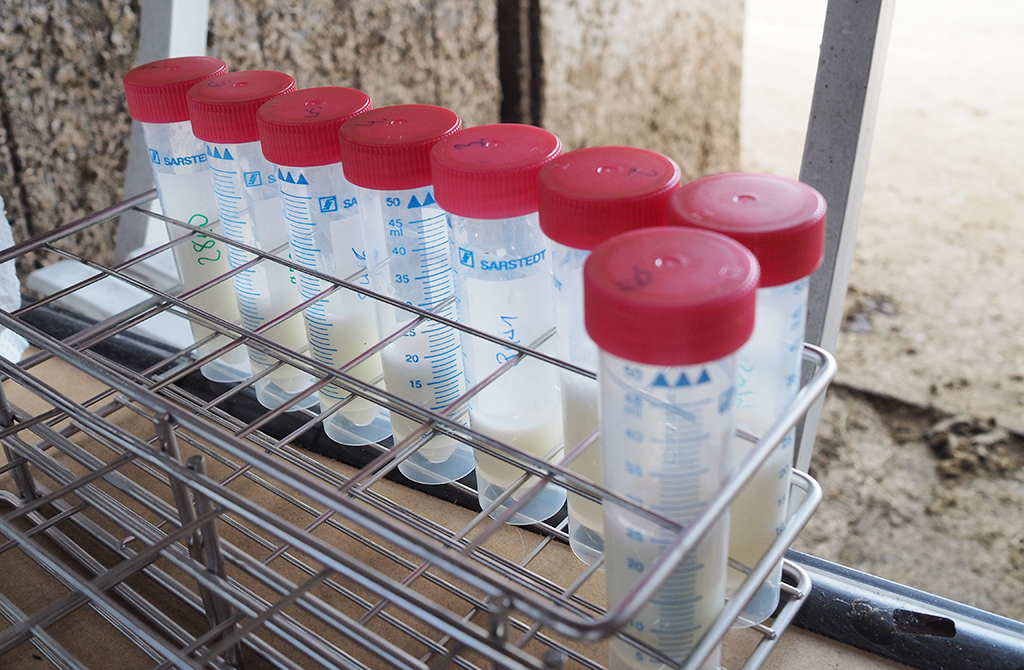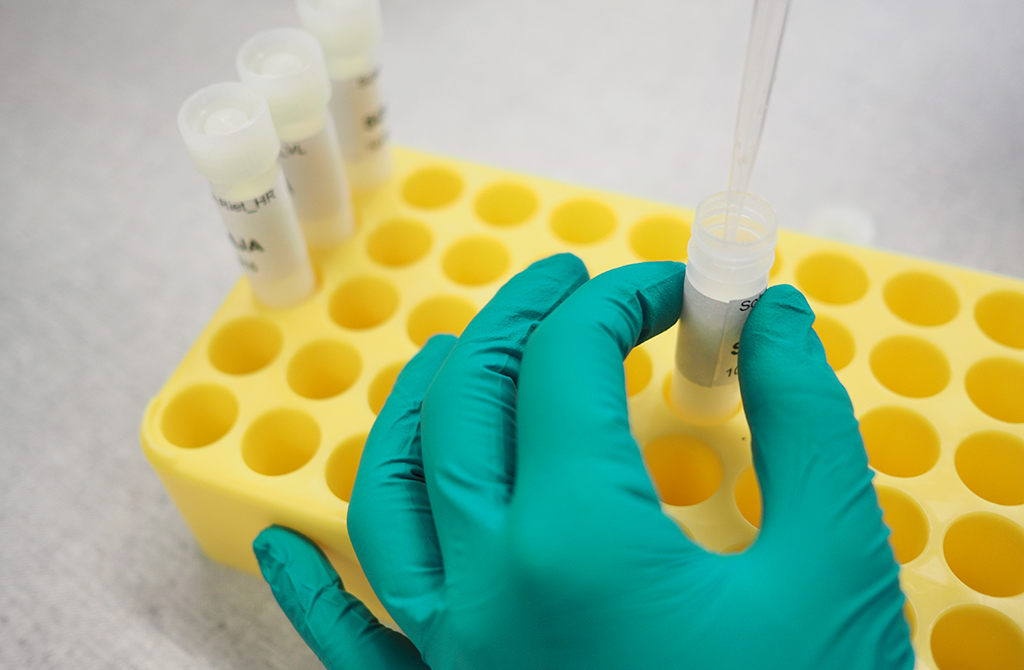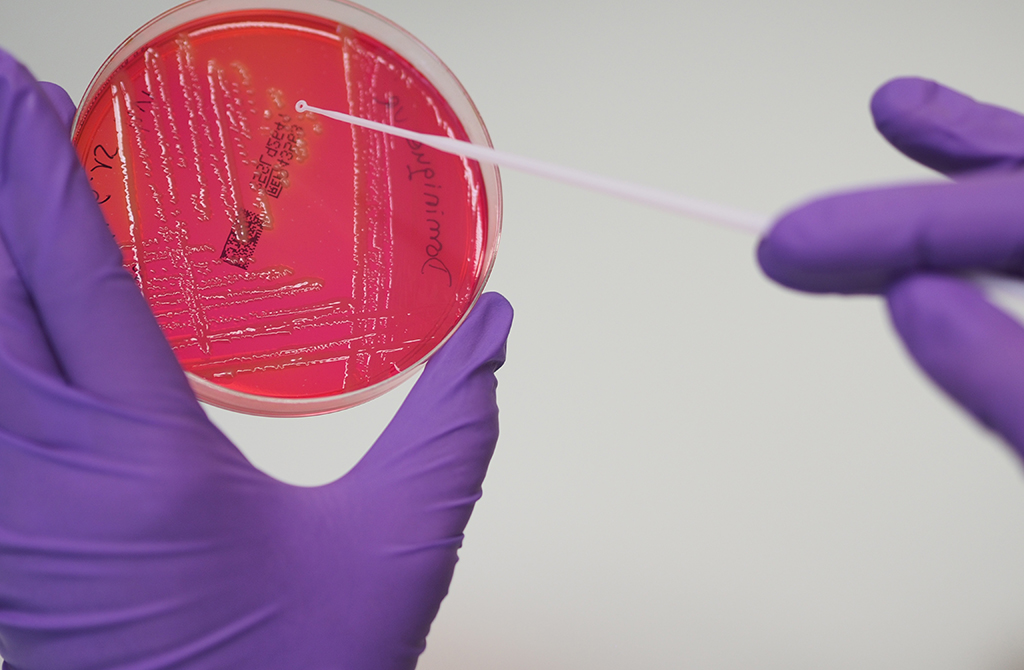The existence of persistent bacteria in the food chain represents a particular challenge for food safety. Agroscope has therefore started a new research programme which aims to identify potential dangers for humans and animals, as well as to develop preventive measures for reducing the spread of tenacious bacteria.
When undesirable bacteria turn up in the food chain, they can make the product in question inedible, or even cause illness in consumers. The situation is especially challenging when the pathogens persist during food production, and remain in the system despite various measures, such as cleaning, being taken.
This persistence can have different causes, e.g. a constant input of bacteria into the system; the occurrence of resistance to antibiotics; heat, dryness and disinfecting agents; or the colonisation of production surfaces by resistant bacterial biofilms.
Preventing serious consequences
To date, too little has been known about these factors to be able to keep problematic bacteria under control at all stages of the food production and storage process. At the same time, controlling these bacteria – especially if they are antibiotic-resistant – is becoming more and more important, since such bacteria can have serious consequences in hospitals, and can only be controlled via a holistic approach in veterinary medicine, agriculture and human medicine.
Applied microbial research that makes use of cutting-edge methods is therefore also in demand in the Swiss food-production sector. The Agroscope REDYMO Research Programme (‘Reduction and Dynamics of Antibiotic-resistant and Persistent Microorganisms along Food Chains’) makes a contribution in three selected areas of food production: plant products, dairy products and pig-fattening.
Bacteria from the water source
During the production of foods of plant origin, and in close cooperation with production facilities, bacteria on leaf surfaces and in the manufacturing environment are characterised in greater detail. New and rapid processes are employed for the precise identification of the bacteria. Initial results have shown the important influence of water source on the bacterial composition of the irrigation water. Furthermore, a start has been made in introducing an optical fluorescence method for detecting the transfer of resistance genes between bacteria on the plant surface.
Pathogens form biofilms
In the dairy sector, samples were taken at different points in the food chain (milking parlour, tank milk, raw-milk cheese) and studied to see what bacteria were present. Agroscope researchers demonstrated that natural gene transfer to pathogenic gut bacteria renders a combination of different resistances to heat treatment and antibiotics possible. Moreover, after adaptation to the ‘milk’ medium, certain subtypes of mastitis pathogens formed biofilms of different strengths. It is hoped that genome analyses will now shed light on these processes.
Antibiotics in pig fattening
In pig production, the effect of plant-based feed additives on the frequency of diarrhoea in piglets is being studied with the aim of reducing prophylactic antibiotic use in pig production. The possible spread of resistant bacteria in liquid-feed systems is also being investigated. To this end, practical studies have been launched on various farms.
The nationally and internationally networked Agroscope REDYMO Research Programme has been launched to a promising start. The aim of the programme is to identify potential dangers for humans and animals as well as to develop preventive measures and solutions for substantially reducing the input and spread of stubborn bacteria.


